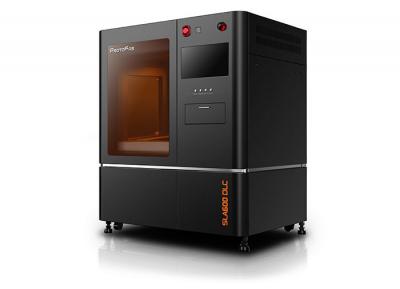Recently, Israeli researchers announced major breakthroughs in organ transplantation: They used 3D technology to print the world's first complete heart, including cells and blood vessels from human cells and tissues. The size of the heart is similar to that of a rabbit heart. The next step is to cultivate its blood pumping function and complete animal transplantation.

"This is the first time someone has successfully designed and printed a whole heart filled with cells, blood vessels and chambers," said Tal Devil, associate professor of molecular microbiology and biotechnology at Tel Aviv University. In the past, people have successfully printed out the structure of the heart using 3D printing technology, but patients who do not use cells or blood vessels will no longer need to wait or take drugs to prevent rejection. Instead, the technology prints out the organs needed by patients and can be tailored to each patient. "This heart is made of human cells and patient-specific biomaterials. In the course of our research, these materials can be used for 3D printing of complex tissue models as biomass inks composed of sugar and protein, "Professor Deville said.

There are still many challenges ahead before the 3-D printing heart can be fully put into use. First, Professor Cost de Ville said that the process of printing the heart in 3-D in a laboratory environment would cost "thousands of New Israeli Shekels (note: 1 New Israeli Shekels = US$0.28). If the technology is commercialized in the future, it may be more expensive. The technology is currently in its early stages, but "maybe 10 years from now, the best hospitals in the world will have printers for human organs, which will work according to pre-programmed procedures." He also points out that hospitals may start with human organs that are simpler than the heart. Professor Deville also explained that the heart they printed through 3D printing technology is currently the size of a rabbit's heart. So the technology also needs to undergo a mature process in bioreactors, a system that supports an active biological environment, and grow them to the size of human hearts. Printing the cherry-sized heart takes three to four hours, but the ripening process may take about a month. Scientists will then begin testing small animals such as rabbits and mice, which can be done in a year or two.

What is the heart "ink" printed in 3D?
This heart can be said to be a scientific breakthrough brought about by the combination of biology, materials science, computer science and many other disciplines. The process is as follows: Researchers first remove some adipose tissue from some patients, and then separate their cells from non-cellular components. These cells were subsequently used to induce pluripotent stem cells, while collagen and glycoprotein were used to synthesize "individual gel" to act as "ink" for 3D printing.

Researchers found that the gel made of their own materials provided a good environment for the development of stem cells. In these gels, stem cells can efficiently differentiate into cardiac cells and endothelial cells. Since all the materials come from the patient himself, the tissue produced by these cells can effectively avoid rejection in allograft transplantation.
Researchers found that the gel made of their own materials provided a good environment for the development of stem cells. In these gels, stem cells can efficiently differentiate into cardiac cells and endothelial cells. Since all the materials come from the patient himself, the tissue produced by these cells can effectively avoid rejection in allograft transplantation.
After the cells were successfully differentiated, researchers began to use this method to "print" heart tissues and organs in 3D. Using CT scans, they outlined the general structure of the heart, including the shape of the heart, the size of the atrium and ventricle, and the direction of the main blood vessels. For the structure of small blood vessel network which can not be obtained by CT scan, researchers also use mathematical models to calculate oxygen consumption in different regions and rationally distribute the direction of blood vessel. With the help of computer, we have obtained a more complete vascular network structure for practical printing.
At present, cardiovascular disease is the first killer of human beings, and heart transplantation is the only choice for patients with severe diseases. Because there is no proper organ, many patients can only wait for the end of life. If this technology can really be used in human organ transplantation, it is undoubtedly a great news.
Maybe in 10 years, organ printers will appear in the best hospitals in the world. We look forward to seeing the dream come true as soon as possible.










